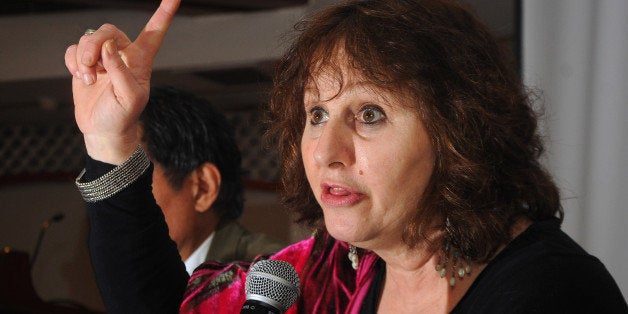
If the words "India's Daughter" haven't caught your attention yet, chances are you may never catch a glimpse of the documentary that sparked the controversy. Recently, the BBC launched a severe, global ban on the documentary about the 2012 Delhi gang rape in response to the Indian government's request to remove all copies of the footage viewable worldwide. The documentary, directed by Leslee Udwin, who according to some reports is a rape survivor herself, has been criticized for being irresponsible and insensitive.
Having managed to watch it before it was pulled, I can concede that it was neither irresponsible nor insensitive. It was, however, vivid and powerful. The images and words linger and echo long after the documentary is complete.
The interview scenes with convicted rapist Mukesh Singh are the most shocking. As he awaits his death sentence, his expressions remain hauntingly stoic. There is no regret, not an ounce of remorse, in his words. "A girl is far more responsible for rape than a boy," Singh says in the interview. "A decent girl won't roam around at 9 o'clock at night... Housework and housekeeping is for girls, not roaming in discos and bars at night doing wrong things, wearing wrong clothes."
His words are shocking, yes; but is this the first example of victim-blaming we have heard? Absolutely not. It was present when state officials like Mulayam Singh Yadav explain rape as "boys will be boys," and when politicians place blame on cellphones and women going out at night. This disturbingly misogynistic victim-blaming mentality transcends the borders of India. The same thinking was present in the Pennsylvania state prison case last year.
If the rapists' views are no different than any other rapist, why, then, is this particular film the cause of national outcry and global controversy? Why the need for a worldwide ban? For the safety of women, the Indian government claims. But, it seems that the international image of the country is more concerning for officials.
The implicit message in the documentary is clear: This is no pathogenic case of victim-blaming. This mentality has been bred in Indian culture as a result of generations of gender inequality. These rapists were not "rotten apples in the barrel"; rather, their way of thinking is not far from the cultural norm in India.
As Javed Akhtar points out in his response to the documentary, the notion that women should not be out at night or dress in a particular way is commonplace in Indian culture. And, that is precisely why it is important for Indians to watch this documentary, he says. They are words that need to be heard, shamed and condemned. So, the Indian men can see that this mentality is not normal; rather it is the mentality of a rapist.
The documentary does shed negative light on India. It paints a picture of a country that is so far regressive that it is incomprehensible to those who have never walked its streets. In the initial reenactment of the rape, the scenes are terrifying and may as well have been out of a horror film. It paints a picture of a broken system -- one where law enforcers are not protecting their citizens' rights, one where bribery can buy its way into a rapist's mind and a hypocritical culture that revers goddesses and violates its own women.
But, it also paints another picture. The documentary is laden with scenes of protesters risking their lives. They have chosen to break the cycle, reject generations of gender inequality, and use the unfortunate events as fuel for change. They are women, men and children on the streets standing up, screaming words of passion and anger demanding justice from their lawmakers and enforcers.
It paints a picture of a nation's citizens who will not back down, and whose powerful emotions will not be watered down by censorship. It depicts a resilient younger generation determined to bring about change. The world needs to see this image of India.
This post was originally published on Masalamommas.com
Follow Anjali Joshi on Twitter at @theresanjali
Read more of Anjali's stories :
The Stigma Attached to Adoption in the South Asian Culture
Cultural Norms Around Breastfeeding: Unexpected Challenges